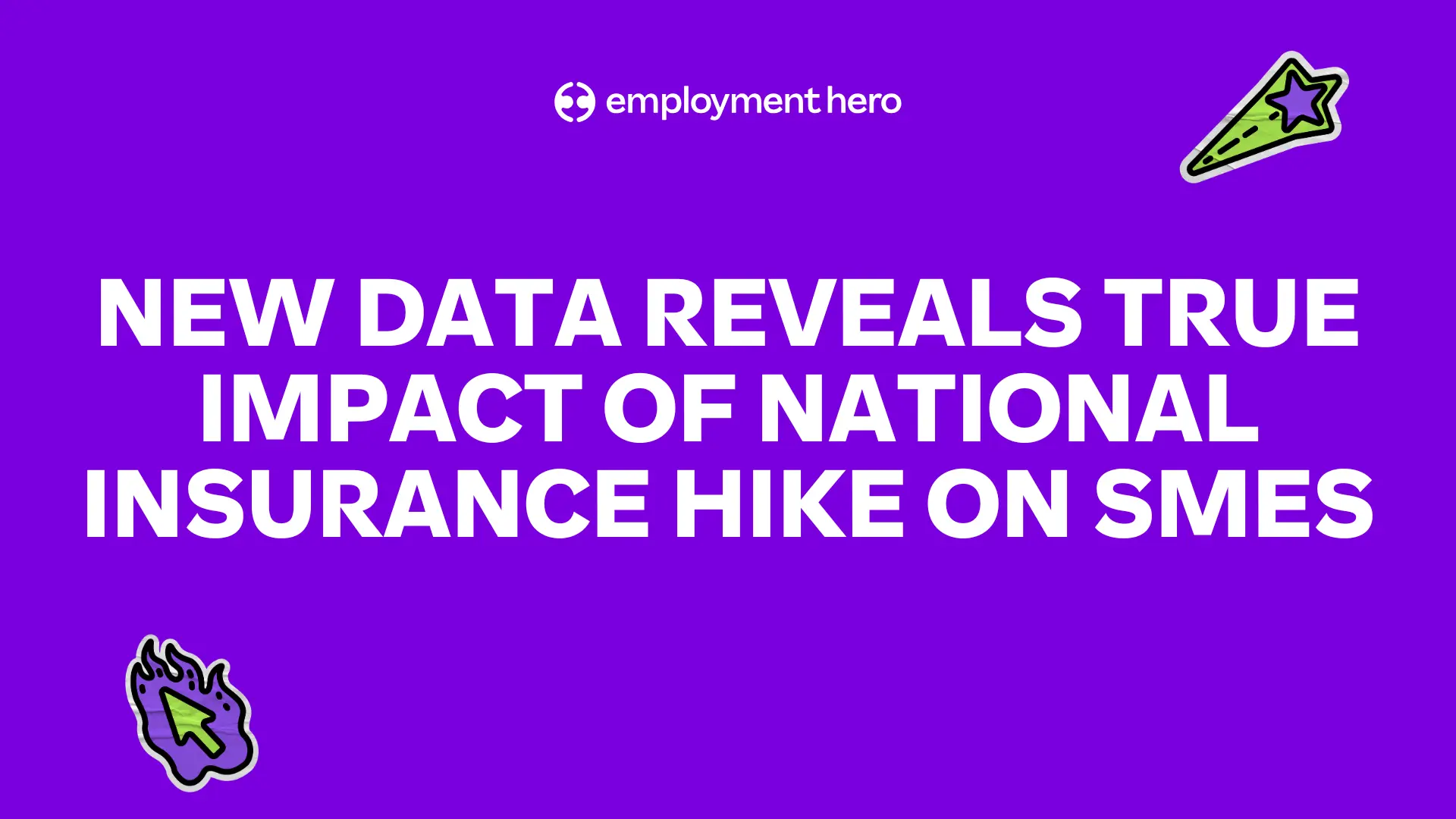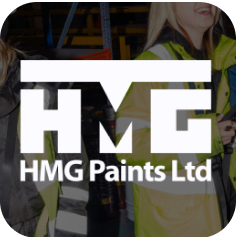Is your HR system still stuck in the Stone Age? It’s time to future-proof
Still chasing woolly mammoths with a quill pen? Your HR might be.
-
Rebecca DiCioccio
Last Updated

Contents
In today’s rapidly evolving business landscape, is your HR system still operating with the efficiency of a quill pen in the digital age?
Many Small-to-Medium Enterprises (SMEs) find themselves burdened by outdated, manual HR processes, unknowingly hindering their potential. This isn’t merely about inconvenient paperwork; it’s about a fundamental barrier to growth, agility and meeting modern demands. Sticking to the “stone age” of HR isn’t just inefficient, it actively erodes your competitive edge and jeopardises long-term survival.
The time for a strategic overhaul is now. Let’s make HR a powerful driver of innovation and success in your business.
Time and productivity drains: Lost hours and opportunity costs
Manual HR processes are more than just a minor hassle; they quietly drain your team’s time and energy, holding your business back from focusing on what truly drives growth
Every minute wasted on a manual process that could be automated, is a minute that could be spent on something that would actually grow your business. In fact, according to our latest research, Work that Works more than half of SMEs are spending one whole day a week on administrative tasks related to employment/HR/payroll. That means 20% of time is lost to these tasks, leaving just four days for strategy, deep work and business growth. But the report doesn’t just highlight problems SME’s face, it dives into the cost of lost time and uncovers the key opportunities SME’s can harness by embracing smarter workflows.
Imagine the strategic work your team could achieve if they reclaimed just 30 minutes each day, that’s 2.5 extra hours a week, or a full day and a half every month, freed from time-consuming admin tasks. This isn’t just about HR teams; it’s about all your valuable employees getting bogged down in administrative quicksand. Here’s how a manual HR system can hinder your progress and impact your bottom line.
Manual data entry and fragmentation
Process: Spreadsheets and paper forms.
Drain: These aren’t just slowing you down; they’re actively undermining your operational efficiency and growth. Fragmented data leads to a constant firefight of errors, pulling HR and business owners away from critical initiatives.
The Cost of What You’re Not Doing: Less time for coaching, career development and true business innovation. Manual HR turns your HR professionals into bottlenecks, not enablers.
Manual onboarding and printouts
Process: New employee onboarding processes, relying on physical documents and in-person signatures.
Drain: This creates a slow, tedious experience for new hires, often leading to a poor first impression and delays in productivity. For HR teams and business owners, it means endless printing, filing and chasing up missing paperwork, diverting valuable time from more impactful work.
The Cost of What You’re Not Doing: Slower time-to-productivity for new employees, increased risk of human error and a missed opportunity to create an engaging and efficient onboarding experience that sets the tone for a positive employment journey. Instead of welcoming and empowering new team members, you’re buried in the admin.
Manual leave requests
Process: Managing leave requests, workload planning.
Drain: Paper-based or email-based leave requests lead to disorganised tracking, potential for miscommunication and difficulties in accurately planning for team capacity. This can result in staff shortages, project delays and frustration for both employees and managers.
The Cost of What You’re Not Doing: Inefficient resource allocation, increased administrative burden on managers and HR and a lack of real-time visibility into team availability, making strategic workforce planning nearly impossible. Your valuable time is spent chasing approvals and manually updating calendars instead of focusing on business growth.
Errors and risks
Process: Payroll errors and compliance risks
Drain: Manual payroll processing is a minefield of potential errors, from incorrect calculations to missed superannuation contributions. Each mistake doesn’t just cost money; it carries the risk of penalties, fines and serious legal repercussions for your business. Staying on top of ever-changing awards and legislation manually is an impossible task, exposing you to significant non-compliance risks.
The Cost of What You’re Not Doing: Instead of investing in growth or strategic initiatives, you’re constantly diverting resources to fix errors, manage audits and navigate the complex, time-consuming landscape of compliance. The stress and financial drain of potential penalties detract significantly from your ability to focus on what truly matters: running and growing your business.
Is your HR system holding you back? Time to Audit
In this digital age, clinging to stone-age HR isn’t just outdated, it’s a dangerous gamble with your business’s future. Digital HR transformation delivers tangible benefits: supercharged operational efficiency, enhanced compliance and strong employee experiences that drive retention. If you’re not sure whether your HR operations are slowing your business down, these checkpoints will help you find out so you can act before it costs you more time, money and talent.
Technology should empower businesses and not hold them back. It should help employees do their best work, not bog them down with outdated processes or clunky systems.
The Work That Works report also revealed something really important: when employees see their company actively investing in technology, they’re 28% more likely to say they’re highly productive and 20% less likely to feel they’re wasting time on inefficient tasks.
That’s a powerful reminder that the right tools don’t just make work easier, they make it more meaningful. When businesses invest in smart, supportive tech, they’re also investing in their people’s potential.
Questions every SME leader should ask
The best people to tell you whether a process isn’t working are your team members. Start by asking these questions:
- Are we spending too much time on manual HR tasks that could be automated?
- Can we easily access accurate HR data when we need it?
- Are our people getting the seamless HR experience they expect?
- Do we know what our HR processes are costing us in time, errors and lost productivity?
- Can our current system scale as we grow?
These questions aren’t about attributing blame, they’re about clarity. They help you see whether your HR system is helping your business future-proof HR or if it’s holding you back.
Key warning signs of outdated HR operations
- Manual process burden: Are HR forms, onboarding, leave requests and performance reviews still handled on paper or via spreadsheets?
- Data in silos: Is HR information spread across emails, files and systems, making it hard to get a clear view of your workforce?
- Approvals that crawl: Do employees complain about slow leave approvals or delayed responses to HR requests?
- Error firefighting: Is your HR team spending hours fixing data entry mistakes or reconciling reports each month?
- Reporting headaches: Is pulling a simple headcount or turnover report a multi-step task requiring manual work.
If you nodded to any of these, your HR system may be among the inefficient HR systems quietly draining productivity.
Need support reviewing your process? Talk to our business specialists today.
It’s time to take your HR system digital
Plan ahead and take your HR system digital so it grows with you, not against you. For SMEs experiencing growth, the traditional HR model quickly becomes a bottleneck. Manual processes designed for a handful of employees buckle under the weight of new hires and expanding operations.
Digital HR systems, however, are built for scalability. They effortlessly accommodate increasing employee numbers, new departments and evolving business needs without multiplying administrative overhead. Onboarding new team members becomes a streamlined, automated process, rather than a mountain of paperwork. As your business expands into new locations or introduces new policies, the digital system can be easily configured and updated, ensuring consistency and compliance across your entire workforce. This inherent scalability frees SMEs from the administrative burden of growth, allowing them to focus on strategic expansion and innovation, rather than getting bogged down in HR complexities.
How can Employment Hero help me to go from pen and paper to a HR tech system?
Employment Hero’s Employment Operating System is more than just a platform—we’ve taken the traditional isolated aspects of employment and integrated them into a seamless, human and AI-powered solution that empowers employers, employees and job seekers alike. Find and hire top talent with SmartMatch, seamlessly onboard new hires, automate complex payroll, drive employee engagement and more.
Our all-in-one system puts HR, payroll, hiring and more all in one place.
One system. Everything employment.
FAQs for taking your HR System digital
An HR system, also known as a Human Resources Information System (HRIS) or Human Capital Management (HCM) software, is a digital platform designed to manage and automate core human resources functions. This typically includes payroll, recruitment, onboarding, employee data management, leave tracking, performance management and compliance, centralising all HR-related information and processes.
SMEs significantly benefit from an HR platform by streamlining time-consuming administrative tasks, reducing manual errors in payroll and compliance and freeing up valuable time for strategic growth. It improves employee experience, supports legal compliance, and provides essential data insights, allowing smaller businesses to operate more efficiently and professionally, akin to larger enterprises.
Moving to a digital HR platform offers numerous benefits, including increased operational efficiency through automation, reduced compliance risks due to automated updates and accurate record-keeping, and significant cost savings by minimising manual work and errors. It also enhances employee engagement via self-service portals and provides robust data analytics for informed decision-making.
Yes, digitising HR processes can lead to substantial cost savings. These savings come from reduced administrative overhead, minimised costly errors in payroll and compliance, decreased paper and printing expenses, improved productivity, and the ability for HR staff to focus on more strategic, value-adding activities rather than tedious paperwork, ultimately contributing to better business outcomes.
Related Resources
-
 Read more: Workplace Trends for 2026: What’s Shaping The Future of Work
Read more: Workplace Trends for 2026: What’s Shaping The Future of WorkWorkplace Trends for 2026: What’s Shaping The Future of Work
AI & automation, micro-learning and trust are shaping the new year. Explore the essential strategies to build a resilient, future-ready…
-
 Read more: Blue Monday: Make It the Most Productive Day of the Year for Your Team
Read more: Blue Monday: Make It the Most Productive Day of the Year for Your TeamBlue Monday: Make It the Most Productive Day of the Year for Your Team
Turn Blue Monday around. Discover how your business can transform the year’s most depressing day into a boost of positivity…
-
 Read more: NEW DATA REVEALS TRUE IMPACT OF NATIONAL INSURANCE HIKE ON SMES
Read more: NEW DATA REVEALS TRUE IMPACT OF NATIONAL INSURANCE HIKE ON SMESNEW DATA REVEALS TRUE IMPACT OF NATIONAL INSURANCE HIKE ON SMES
NIC changes will cost medium SMEs £18,000 annually. New analysis shows firms with >8 employees face steep costs, while Midlands…



















